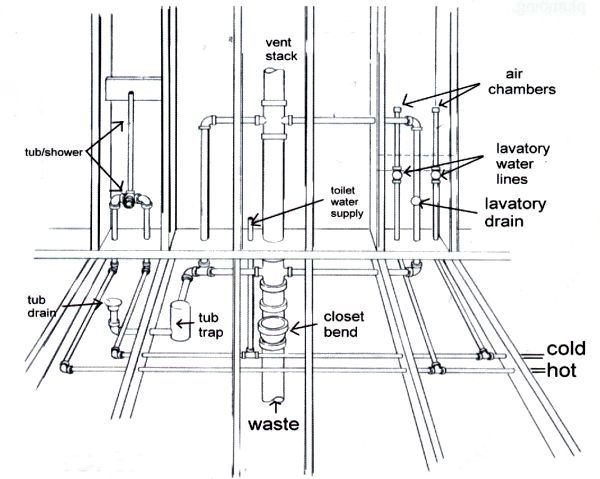New Plumbing Installations
Plumbing is an essential part of any building project, from new constructions to significant renovations. Proper installation ensures a reliable water supply and efficient drainage, preventing future problems and ensuring long-term satisfaction.
Planning Your Plumbing System
Effective planning is the cornerstone of any successful plumbing project. Begin by considering the following aspects:
- Water Supply Source: Identify your water source, be it municipal water lines or a private well, and assess its capacity to meet your household’s needs.
- Fixture Placement: Decide on the locations of all water-dependent fixtures such as sinks, toilets, showers, and appliances like dishwashers and washing machines.
- System Layout: Plan the layout for water supply lines, drainpipes, and vent pipes. A logical and accessible layout can minimize future maintenance issues.
- Budget Considerations: Establish a comprehensive budget that includes the cost of materials, labor, permits, and any unforeseen expenses.

Selecting the Right Materials
Choosing the appropriate materials is crucial for the durability and efficiency of your plumbing system. We use these common materials in plumbing installations.
- Copper: Copper pipes offer durability and resist corrosion, making them a reliable choice for water supply lines.However, they can be costly.
- PVC (Polyvinyl Chloride): PVC pipes are cost-effective, easy to install, and resistant to corrosion. We commonly utilize them for drainage, waste, and venting systems.
- PEX (Cross-linked Polyethylene): PEX piping is flexible, easy to install, and resistant to scale and chlorine, making it suitable for both hot and cold water lines.
- CPVC (Chlorinated Polyvinyl Chloride): CPVC is capable of handling higher temperatures compared to PVC, which makes it suitable for hot water lines.
- Cast Iron: Cast iron pipes are strong and effective at reducing noise from water flow, often used for drainage systems.
The Process for New Plumbing Installations
The installation of a new plumbing system involves several key steps:
- Rough-In Plumbing: This initial phase sets the groundwork for your plumbing system. It involves installing the main water lines, drainpipes, and vent pipes before walls and floors are finished.
- Installing Fixtures: After the rough-in phase, fixtures like sinks, toilets, and showers are installed. This step requires precision to ensure proper alignment and secure connections.
- Connecting Appliances: Appliances such as dishwashers and washing machines are connected to the plumbing system, often requiring shut-off valves and other safety features.
- System Testing: Once installation is complete, the system must be tested for leaks and blockages. Pressure tests and thorough inspections are essential.
- Final Inspection: A final inspection by a licensed professional ensures that the plumbing system complies with all local codes and regulations.
Hiring a Professional Plumber
While some plumbing tasks can be handled by skilled DIY enthusiasts, new plumbing installations typically require professional expertise. Here’s why hiring a licensed plumber is advisable:
- Experience and Knowledge: Professional plumbers have the training and experience to manage complex installations and anticipate potential issues.
- Code Compliance: Licensed plumbers have a thorough understanding of local building codes and regulations, ensuring your installation adheres to all required standards.
- Safety: Proper installation prevents issues like leaks, water damage, and mold growth. Professionals ensure secure connections and functional systems.
- Warranty and Insurance: Reputable plumbing companies offer warranties on their work and carry insurance, providing peace of mind and protection against potential problems.
Ensuring Code Compliance
Adhering to local building codes and regulations is essential for the safety and legality of your plumbing installation. To ensure compliance:
- Obtain Necessary Permits: Most plumbing installations require permits. Check with your local building department to understand the requirements and obtain the necessary permits.
- Schedule Inspections: Plan for inspections at various stages of the installation process. Inspectors will verify that your plumbing system meets all codes and standards.
- Maintain Records: Keep detailed records of permits, inspections, and any modifications made to your plumbing system. These records are valuable for future renovations or when selling your property.
Conclusion
Investing in a new plumbing installation is a significant step toward ensuring the functionality and value of your property. Through careful planning, selecting the right materials, hiring experienced professionals, and ensuring compliance with local codes, you can achieve a reliable and efficient plumbing system.
For expert assistance with your plumbing installation project, contact us today. Our licensed plumbers deliver top-quality workmanship and exceptional service.

